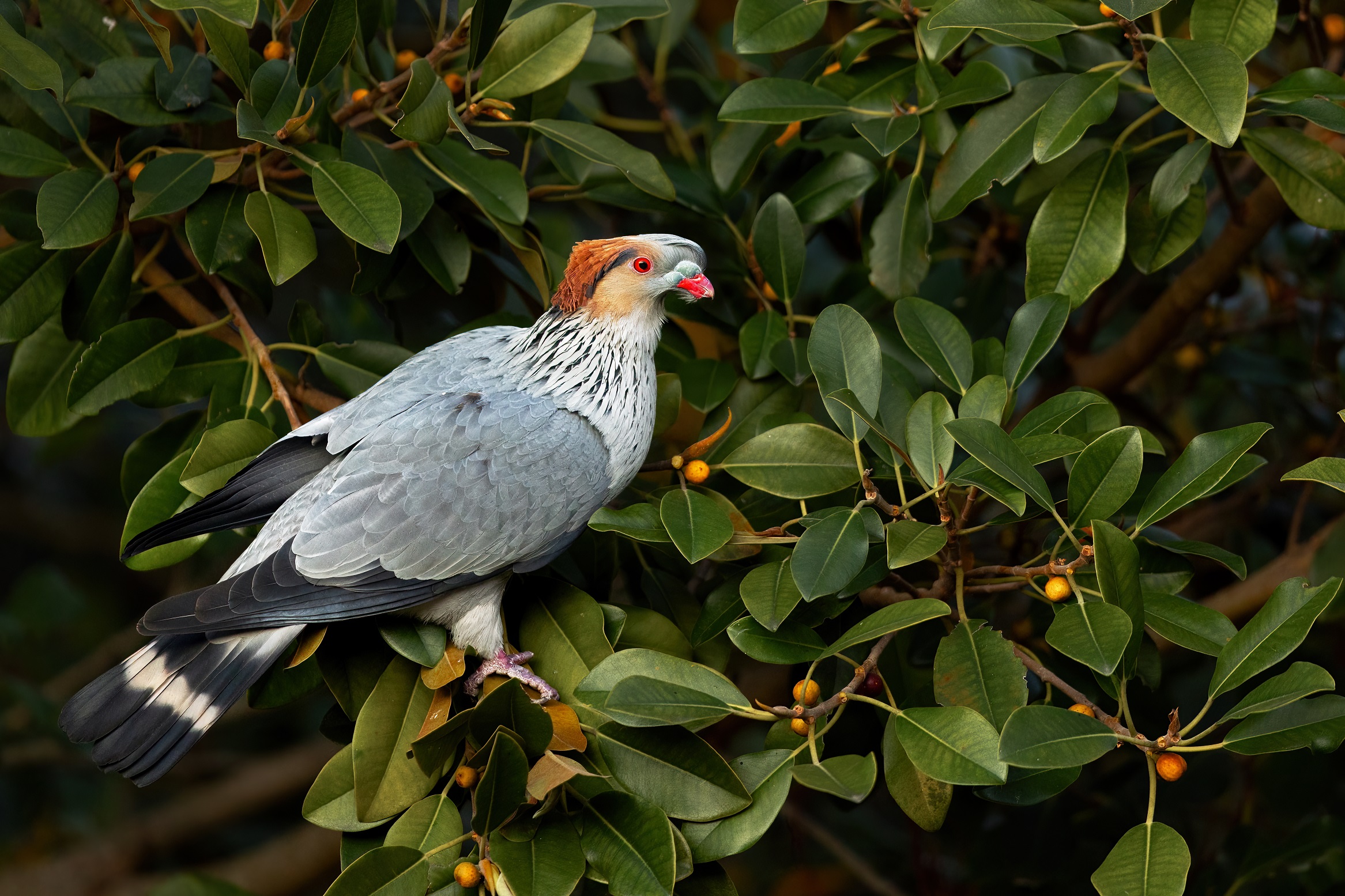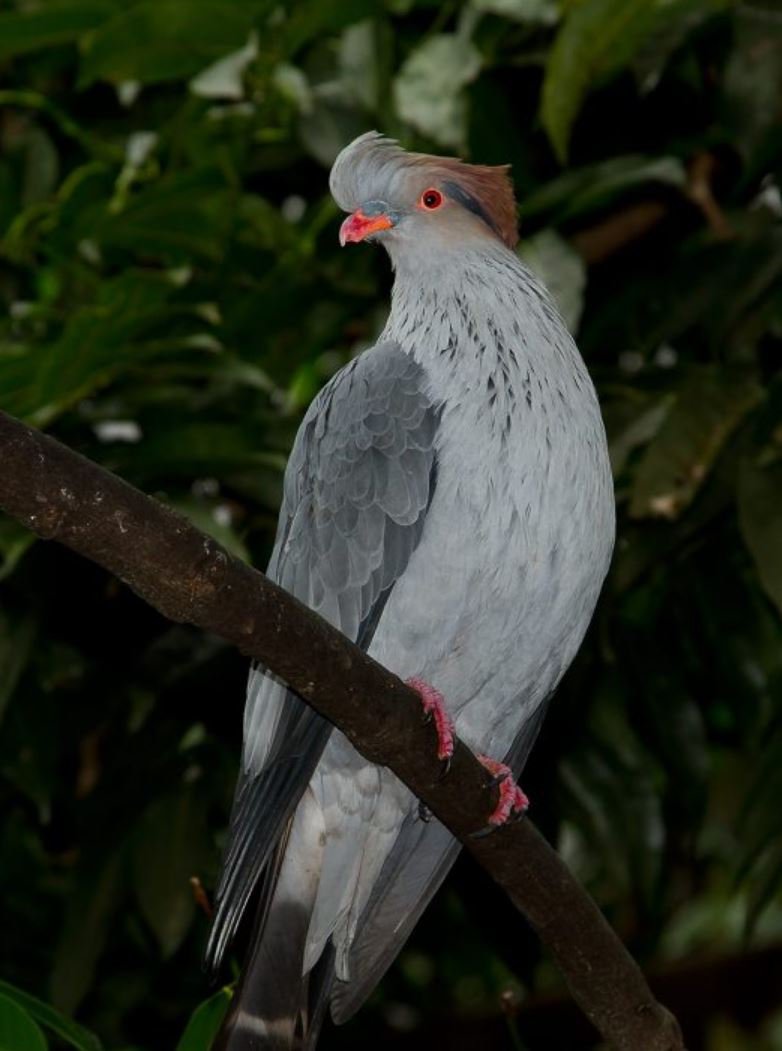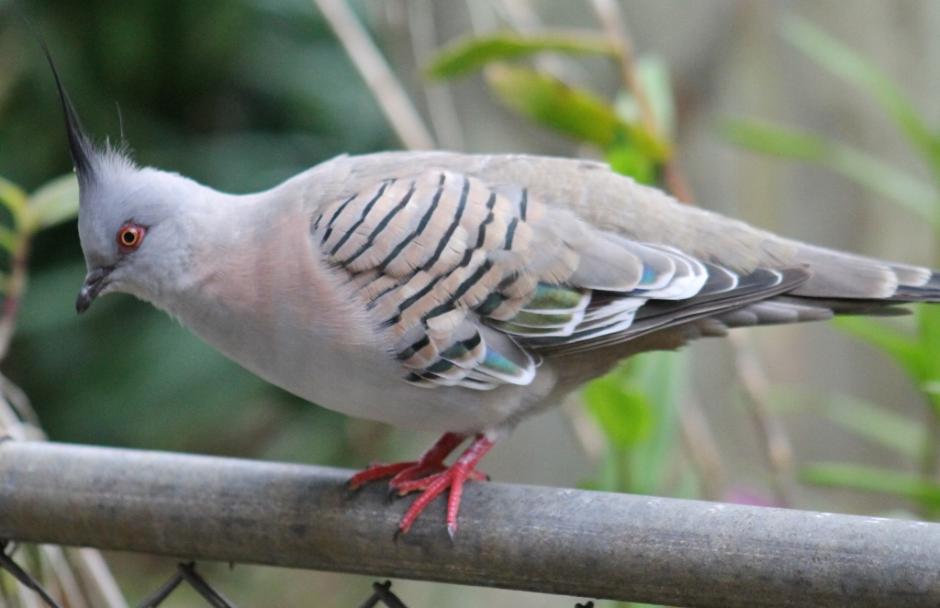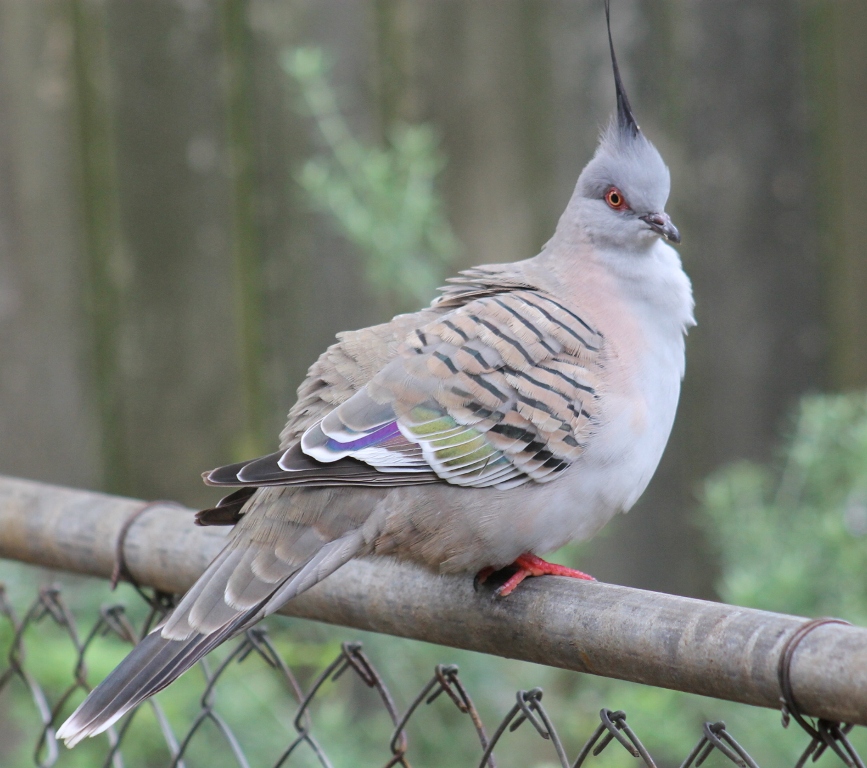Topknot Pigeon Flock of 10-12 Spotted: Winter Visitors to Pittwater
A scan of ebird records these Winter visitors to our area have also been seen and photographed on the Central Coast from late June 2025 onwards.
They are nomadic and highly mobile, following seasonally-abundant fruit, such as that currently fruiting on palms and figs. In Sydney, birds arrive from the north in Autumn and Winter.
When in Pittwater, they have also been recorded in Warriewood wetlands and at Mona Vale - this great photo taken by local photographer J J Harrison was taken at Mona Vale in September 2024:

They are quiet birds, despite being so big - over twice the size of other pigeons - and incredibly gentle.
Human residents of Pittwater are pretty excited about the spotting of this flock - the first in a few years of this size.
The Topknot pigeon is a large predominately slate-grey bird, 40–46 centimetres (16–18 in) in length. The back, coverts and upper secondaries are a darker slate-grey with black quills. The primaries are black, the remaining body in a lighter slate-grey in colour. The chest and hind neck are notched, showing dark bases giving a streaked appearance.
The tail is black crossed with a board grey band. The crest is grey from the cere to the forehead, and russet brown on the crown with black sides. The mandibles are red with a brown tip, the protuberances at the base of the mandibles are bluish-green. The tarsals and feet are purplish red.
The sexes are similar in description. However, Males have larger crest and lack some of the streaking on the chest. Juveniles are like females but the chest is mottled not streaked, the crest is smaller, with the cere and forehead being light brown, the crown grey. Tarsals and feet are reddish brown. The iris is yellow-golden with a bright red outer band. In fledglings the iris is brown.
English naturalist George Shaw described the topknot pigeon as Columba antarctica in 1793.
The topknot pigeon is sister taxon to a lineage that gave rise to the mountain pigeons (Gymnophaps) of New Guinea, the common ancestor of both diverged from a lineage that gave rise to the kererū and Chatham pigeon.
"Topknot pigeon" has been designated the official common name by the International Ornithologists' Union (IOC); John Gould noted in 1848 that it had been given this name by the colonists of New South Wales. It is also known by the name of "flock pigeon".
Three distinct calls have been described. The first, ‘coo-oo, eee’, might be related to nestlings. The second, ‘coo-oo, ooo’, is distinctly louder but still soft. The third, ‘cor-or’, is "a quiet, croaky, almost guttural utterance", not unlike the call of the domestic pigeon. During times of flocking and mass feeding, this pigeon has a short raucous call. This last call has been described as "a distant flying fox or domestic pig".
Found from the Cape York Peninsula in Queensland to the central south coast of New South Wales. These pigeons cover great distances in search of fruit bearing trees suddenly appearing in areas where they have not been seen for many years and will occasionally move beyond their normal southern range limit, into eastern Victoria. Historic records from 1953 show the topknot pigeon as an "accidental" species to Tasmania with a specimen taken at Spreyton near Devonport. This bird was one of a flock of 9-10 birds feeding on cherries. Previous to this sighting, the only other recording was in 1907 when two specimens were taken near St. Helens, east coast of Tasmania.
The topknot pigeon has a solely frugivorous diet which varies throughout its range as fruit ripen at different times during the year. This includes various species of Ficus and other rainforest fruit trees. Unlike some other species of Columbidae, the topknot pigeon does not use grit in its crop to break down the seeds of the fruit it consumes, and therefore the seeds are defecated intact. This results in seed dispersal not only under the fruiting trees the birds are feeding on but also under their roosting trees.
In recent years, the spread of Tuckeroo trees into bushland areas has been attributed to this bird, leading to councils scaling back their planting as street tree alternatives. Mr. Harrison's photo shows a Topknot feeding on Tuckeroo.
Those seen feeding at North Avalon were eating these palm trees fruits:

Topknot Pigeon. Image: Trevor Andersen
The Topknot's breeding season can be directly related to the combined ripening of fruit trees and palms within the rainforest habitat, forcing birds to mass flock and congregated at these areas.
They form monogamous breeding pairs after an elaborate courtship of bowing and parading. Males also fly very high over the canopy to attract females. Nests are built in the crowns of the trees, from 2 m to 12 m above the ground.
Nests and eggs have been reported from June to December. The nest has been described as sometimes flimsy but frequently substantial, built of stout sticks from turpentine and eucalyptus trees. A single ovate egg about 43 by 30 mm in size is laid. Incubation takes 17–24 days in captivity, and both parents appear to share incubation duties.
The species used to occur in enormous numbers in Australian rainforest, but the population declined due to forest clearance and shooting. Because of concern over the steep decline in their population, Topknot pigeons now are a protected species in Australia. However the increasing prevalence of a new food source in the fruit of the 'weed' camphor laurel trees has seen a recent resurgence in their number.
Some people have in the past confused the Topknot with the Crested pigeon - a year round resident of Pittwater.

The crested pigeon (Ocyphaps lophotes, commonly mistakenly called a topknot pigeon) is a bird found widely throughout mainland Australia except for the far northern tropical areas. It is the only member of the genus Ocyphaps. There are only two Australian native pigeon species that possess an erect crest, being the crested pigeon and the spinifex pigeon. The crested pigeon is the larger of the two species.
Their most distinctive behaviour is the beating and whistling sound their wings make when they take off. This happens because they have an eighth primary feather that is much narrower than its neighbours.
The length of the crested pigeon varies from 30 to 34 centimetres (12 to 13.6 inches). Colouration is grey with tinges of brown and green. It has a feathered but slender, black spike on top of the head. They run with the crest erect. The periorbital skin is bright orange. Wings have black stripes and are bronzed, while the primary feathers have colourful areas of brown, purple, blue and green. Immature birds have duller colours with no bronzing on the wings.

.jpg?timestamp=1752877471231)